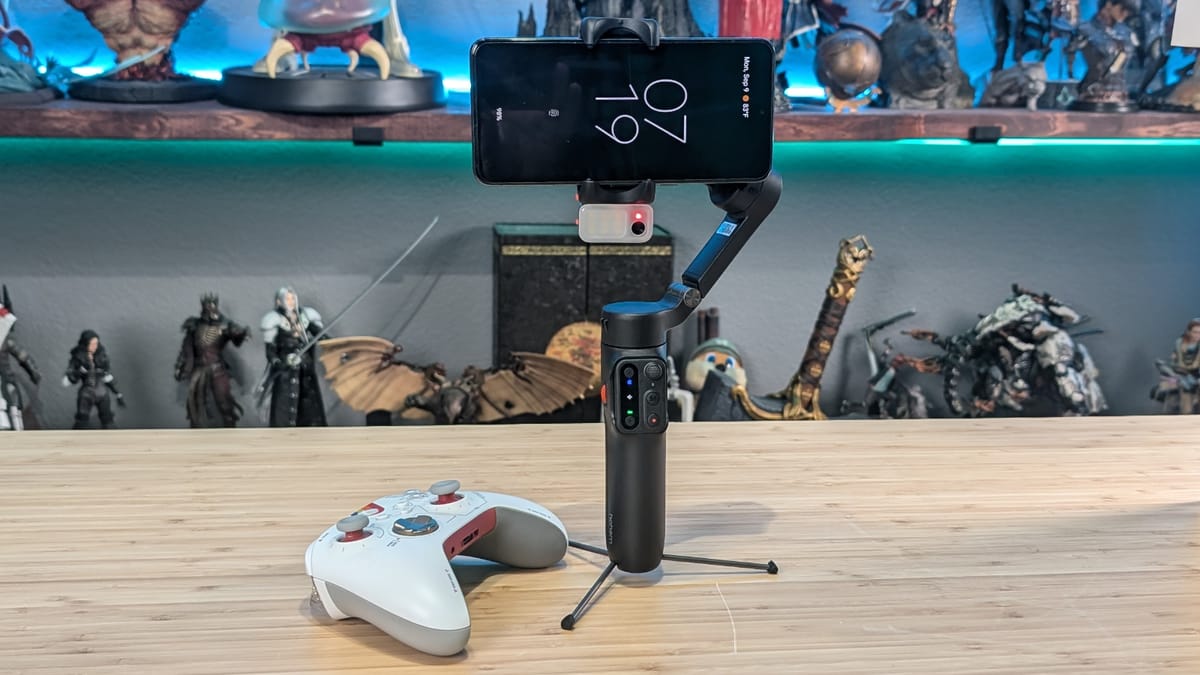
There is no way you can avoid AI these days. Every company under the sun from Adobe to the company that makes my microwave is claiming that, somehow, AI will improve every activity you can possibly imagine. Well, there are a few that can actually do exactly that. Recently I was on the hunt for a gimbal for my phone as the Pixel 8 Pro has an incredible camera and I wanted to make cleaner use of it – the steady feature can only do so much. When the box for the Hohem iSteady V3 arrived I thought maybe there was a mistake. The box was tiny? Well, small things can pack one hell of a wallop. Let’s unpack the most compact, and easily most powerful small gimbal I’ve ever seen. This one blew me out of the water, so let’s talk about it.
We’ve actually reviewed several Hohem devices, including the iSteady V2 (that review here), as well as their absolutely fantastic microphones like the Hohem MIC-01 (that review) that I use on pretty much every shoot. While I’d not heard of them a few years ago, they’ve become a solid player in the mid-range 3-axis gimbal space, competing with the best like DJI and Zhiyun but at a far lower price.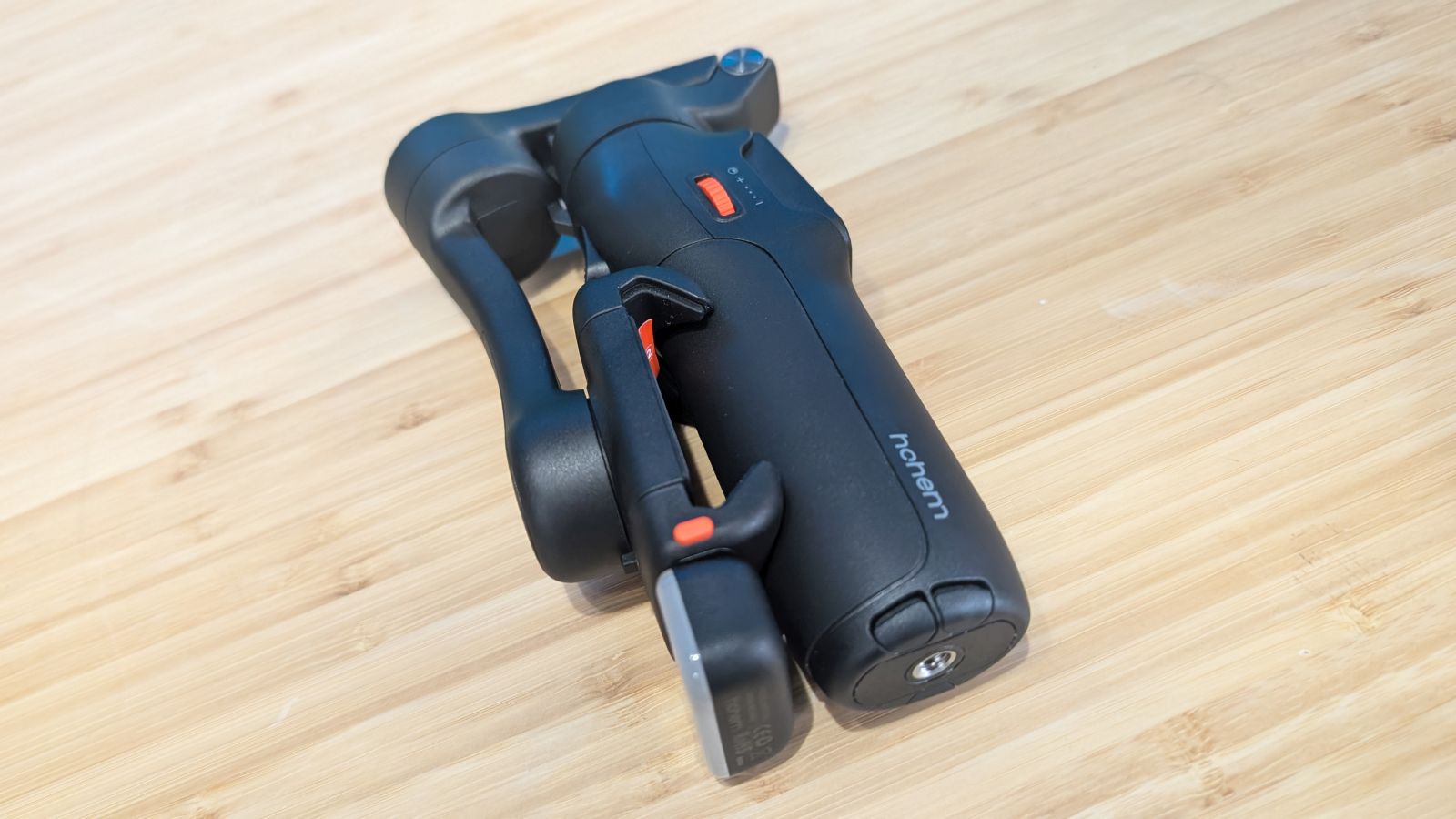
As I mentioned, the gimbal came in an impossibly small box. Folded up, the device is as tall and wide as the phone it’ll hold. The amount of engineering required to make this operate like a Transformer must have been extensive. Making it then easier to unpack and be ready to go in a matter of moments even harder still. On the body of the device are a handful of stickers that explain in very clear and unambiguous detail how to unfold, and conversely, re-fold the device. It’s not complicated without the stickers, but it’s a nice touch for the first time you put it back in this configuration. Labeled with a 1, the first sticker plainly states “Lift the arm upwards to unfold the gimbal”, which really is the long and short of it. The other stickers also show you a few tricks that aren’t immediately obvious – the iSteady V3 has a few hidden features.
The first sticker from the bottom points to a small integrated gimbal. On one side is a single post, and on the other are two posts. Pulling these down, they kick out to make an easily-hidden tripod. These legs seem to be little, but they can hold my heavy phone easily – just know that you will need to remove it from any case you might be using. This is normal, but it should be said. Also in the bottom of the device, you’ll find a standard 1/4 -20 (that means 1/4″ diameter, 20 threads per inch, if you were curious) thread hole. That means you can easily spin in a SmallRig Mini quick-release tripod, for example, or drop it onto a full-size monopod or tripod if that’s your jam.
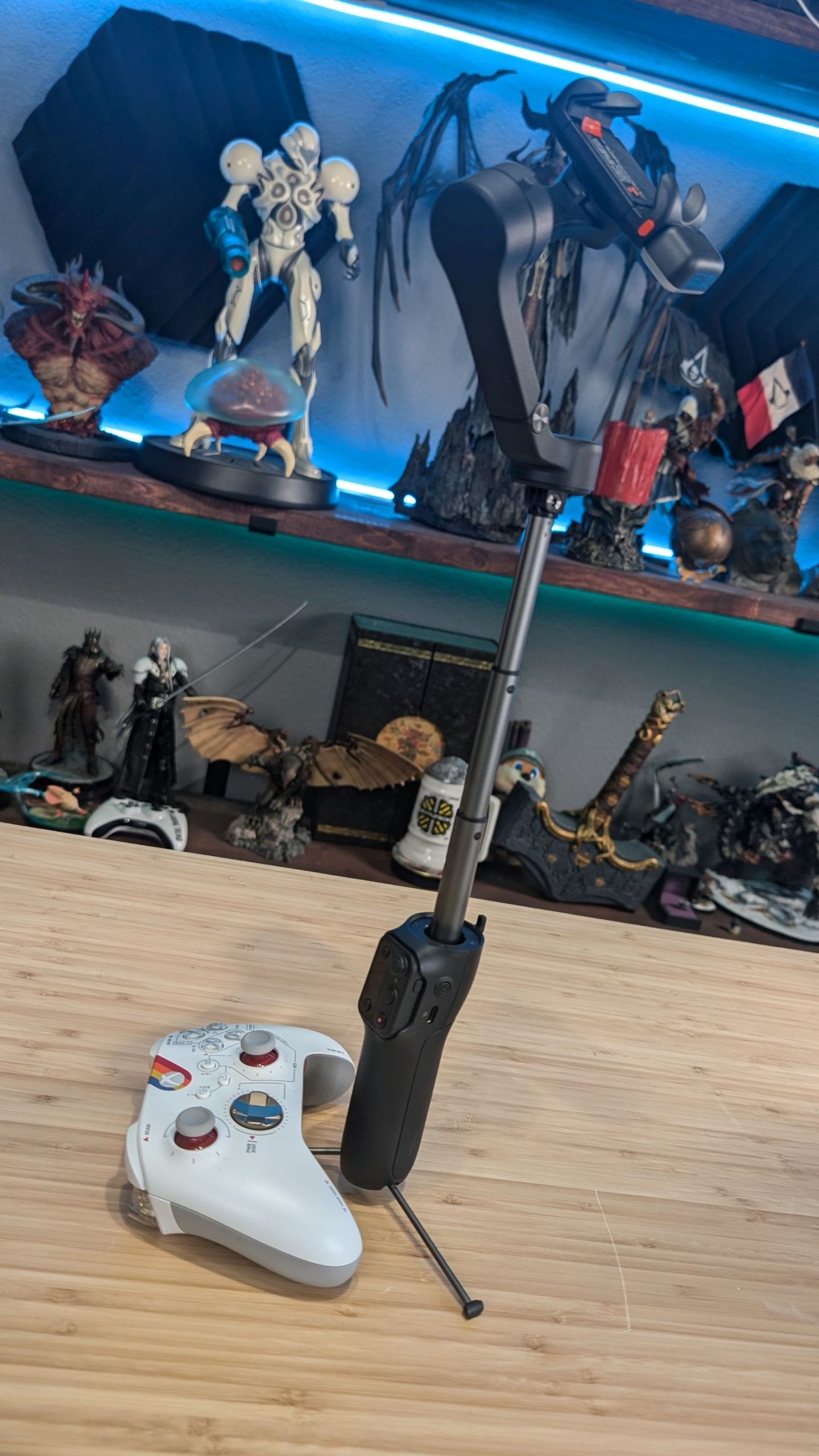
Moving up the body of the iSteady there’s another sticker. It says “Pull out the extension rod”. You see, inside the body, impossibly small as this gimbal is, it also has a three-tiered extension rod to further drive the usability and utility of this steadying device. The extension rod measures 8.1”, and the entire device, even extended, is able to handle a load of 10.6 oz, and with a 2.3 to 3.9” clamp, so it’ll handle the heaviest iPhone (the 2024 iPhone 15 Max at 7.8 oz) or heaviest Android (the Samsung Galaxy Z Fold 4 at 9.28oz) with a bit to spare. The current iPhone and freshly-launched Android Pixel 9 Pro (7.01oz) will easily fit as well. Just about any device from the last decade will work in this gimbal, and likely anything coming in the immediate future as well – Hohem did a great job future-proofing this device.
The sticker inside the clamp advises that the device’s default is going to be vertical – perfect for folks who shoot for Instagram or TikTok. It also advises how you mount the camera to get the device balanced. We’ll come back to this later.

There’s a sticker on the opposite side of the AI tracker / fill light that sits adjacent to a small nub. The sticker reminds you that this nub aligns to a notch in the lower part of the handle to align it to fold it back up. It’ll help you spin the light to align with the bottom and to secure it all so it doesn’t move. The final sticker just reminds you to press both buttons on the sides just below the AI module / fill light to remove it.
The final component on the device is actually somewhat hidden and very unexpected. On the body of the device is a small detachable remote control. It magnetically sticks to the device, so it’s easy to not realize that it can be removed and used remotely. It has two buttons on its face on the left side, with a list of what’s currently active or what mode the device is using, such as Bluetooth if you’ve got a locked axis for example. This is an excellent option for shooting solo but without using the gesture-based controls. Next to these is a thumbstick for moving the gimbal, a button with an M on it, and a record button. All of this ties to your phone via Bluetooth.
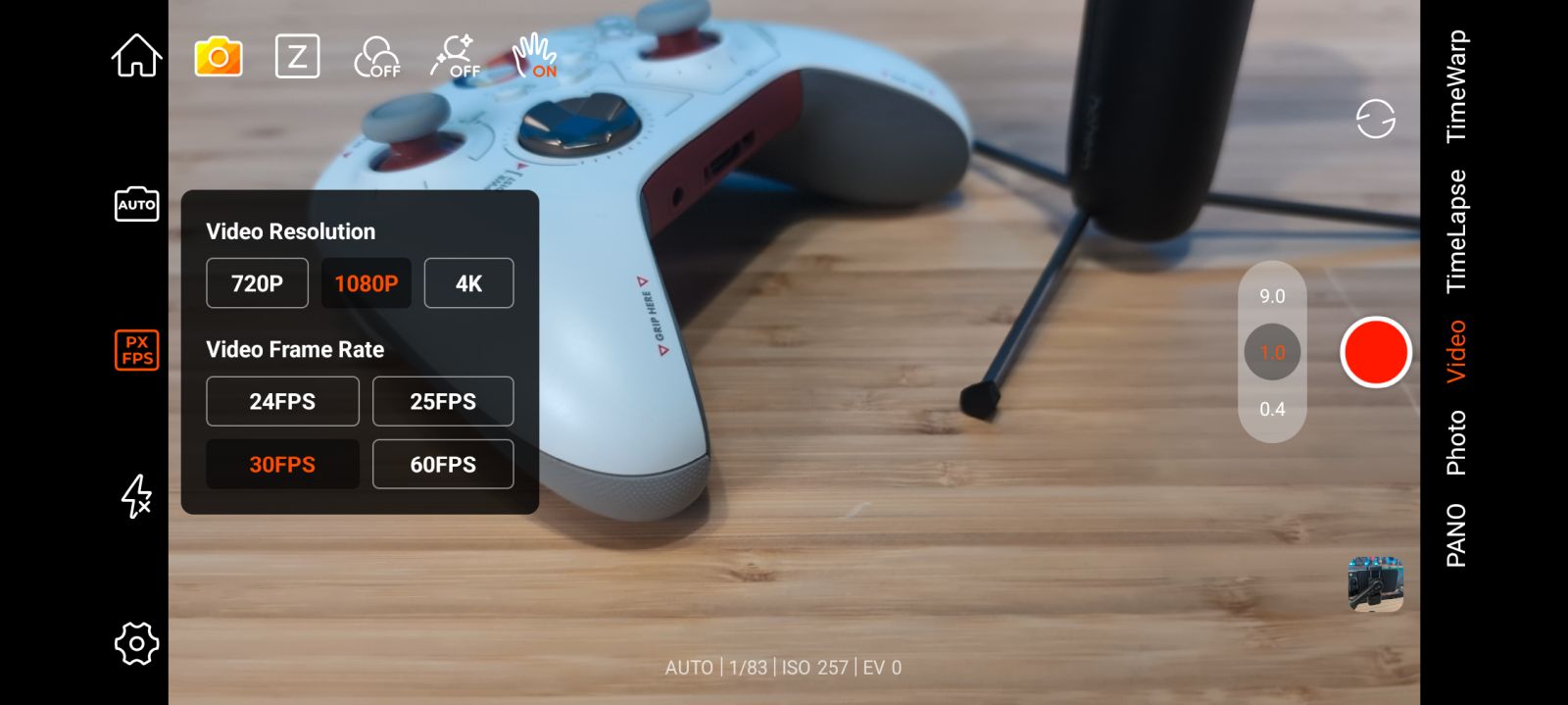
The iSteady V3 utilizes Bluetooth 5.1. Synchronization is as simple as holding in a button and setting your phone to connect. Once you’ve done so, it integrates with a great many functions of the iSteady. Let’s dig into them.
To be clear up front, you don’t need to actually use the Hohem Joy app to get most of the utility of the Hohem iSteady V3, but there are a handful of goodies that are exclusive there. Not unlike high-end PTZ (that stands for pan, tilt, zoom) cameras like you’d see in a company meeting room, utilizing Hohem Joy allows you to utilize a handful of gesture controls that can be extraordinarily useful for keeping the action where you want it. For example, Follow+Shoot allows the AI module to keep locked onto an object, capturing it the entire time. Follow Only tracks you automatically, but without recording until you give it a new gesture to trigger it. Similarly, Shoot Only instead triggers a photo rather than a video. You start this recording or snap a picture by giving the peace symbol to the camera, and you put up your hands in a “stop” symbol to get it to stop. The hang loose with both hands adjusts shutter control, and framing your face with your thumb and index finger at varying distances from one another identifies the shot composition. A double thumbs up switches the camera from landscape to portrait. Just be mindful if you’re the type of person to use these gestures in your natural movements. Just for completeness, let’s take a look at the raw capabilities of the iSteady V3’s movements.
Controllable Range
Pan: -120° to 210°
Roll: -195° to 135°
Tilt: -35° to 45°
There are a handful of goodies that I’ve seen included more and more in cameras coming from non-US markets. Yes, there is a deluge of filters you can apply automatically such as Rosy, Studio, Bright, Cool, Teal, Cold, and more, as well as A LOT of food and night filters to help you nail the color. All of these are expected, but the “slim” and “resize” for your eyes are a little odd. Not only are these filters dishonest and distracting (we see time and space warping in the background), they also tend to break when your face reaches the edge of the screen, causing them to jitter in a telltale way.
Also included in this app is a wealth of tools like TimeLapse, TimeWarp, SlowMotion, Panoramic, as well as resolution/framerate settings, timers, ISO and shutter speed adjustments, and essentially everything else you’d find on a mid to high-range handheld camera. It even keeps track of battery for both the device and the phone so you can ensure you stay charged and ready. Since the iSteady runs off of USB-C and with rapid charging, it can also run off of a small power brick, integrated into a tripod, strapped to the side, or whatever else you might choose.
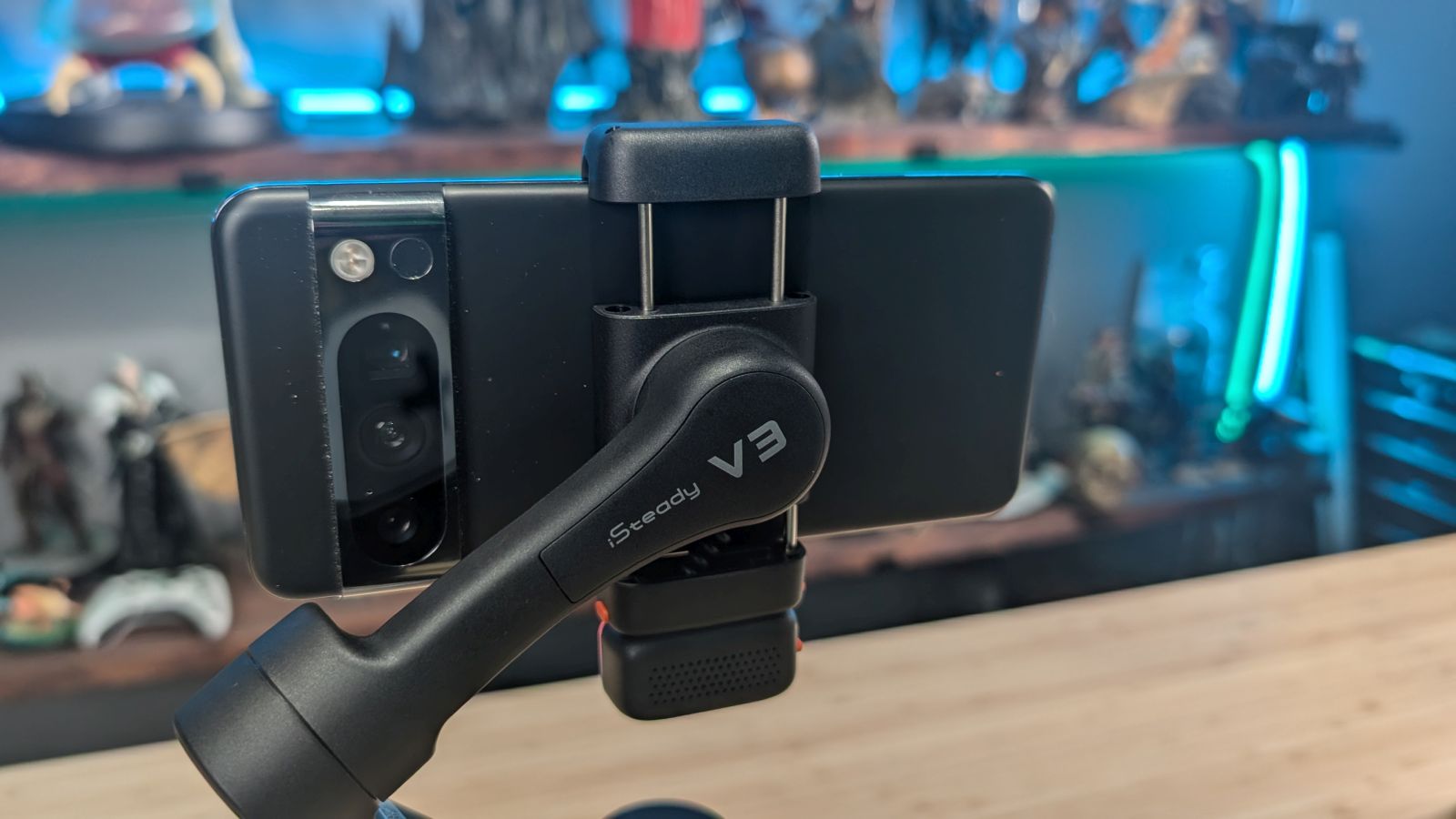
The battery is an integrated 1400mAh nested inside the shaft. The battery lasts a full 13 hours at a full charge, but the battery is greatly affected by the fill light. The fill light is nested inside the AI module has a whopping 13 levels of brightness, actuated by a small orange scroll-wheel / button on the side of iSteady. Holding in the button turns it on and off, and scrolling slowly turns it up, peaking at around 110 lux. Clicking the wheel toggles between a 2700K, 5000K, and 6500K color temperature. The brightness levels do have a direct correlation with battery life. At max brightness you’ll only see about four hours of battery (for reference, 1400mAh is roughly 1/5th of any modern phone’s battery life, and it’s undoubtedly this way to limit the weight of the device), and can be charged back to full in about 2.5 hours using the supplied USB-C cable. Turning this light on is accomplished with a small switch on the side if you want to turn it off, but turn on the AI module without it.
Once the AI is on, it enables the gestures I mentioned above. It also allows you to draw a green square around a person or object, identifying it for tracking. Doing so will allow the camera and gimbal to work together to remain locked onto that item – handy if you are tracking a moving object like a dog or cat, or if you are moving and want to keep your eye on an item.

There aren’t a ton of buttons on the iSteady V3 so most of them serve double or triple duty, and occasionally more. Holding the trigger for two seconds locks the device in landscape mode, but double tapping the trigger frees it, but only in four directions. Triple-tapping it all flips the camera 180 degrees for selfies. The same goes for the wheel – holding for three seconds turns the AI / light module on, double tapping changes color temp, five clicks re-links the remote control module, and a whipping seven clicks initiates Bluetooth pairing. There are similar functions on the control module. In short, it might help smooth your shooting if you spend a little bit of time learning the buttons on the device
We’ve already made use of the iSteady V3 in a number of reviews and you might not even realize it. The up-close cabinet work on my arcade graphics installation was made smooth through the use of this device. While I used my Blackmagic 6K Pro for my main shots, it’s remarkably impractical for motion shots, and no gimbal out there can hold the weight. Here I was able to grab the gimbal and my phone, and in a matter of moments, I was able to easily grab the occasional sweeping up close shots you see throughout the video.
As you can see in our review of the arcade artwork from GameOnGrafix.com, we needed some steady close-up camera work, and the Hohtem iSteady provided that perfectly. We were able to get up close with the art, smoothly transitioning from walking shots to rising shots shots without a problem. When Ara is on screen, it also easily tracked her movements to ensure she stayed in frame.
The next thing I did was take the V3 on the road to an event for Dragon Age: The Veilguard. Here it was able to make my shaky hands passable as I recorded some b-roll footage of the EA logo, as well as some of the walk-around footage I’m allowed to showcase of the Veilguard space. You can see that on our social media space right here:
The various iterations of gimbals Hohem has produced have gotten progressively more stable. Their “iSteady 8.0 Stabilization” tech is meant to help you lock in the best possible shot. Now, I don’t have the most stable of hands, so I have a deep appreciation for stabilization tech. To be clear, it’s not going to make bad footage somehow good, but it does do a remarkable job of ensuring that an otherwise wobbly shot is less so. Shots that would normally take me a few attempts I could grab on the first pass. Sometimes you only get one shot, so the more often that happens the better.
I did mention that I use the Hohem MIC-01 for audio capture. This was very clearly on the mind of the engineers when they built the iSteady V3 as it is suited perfectly to this gimbal. The MIC-01 plugs into the USB-C port on the bottom of your phone, and thanks to the claw design on the iSteady V3, it’s never in the way of the control arm of the gimbal. Better still, it means you can now pair very smooth motion and video capture with top-shelf audio on the move. There are times when impromptu audio and video capture is hard, but when you can contain both in the palm of your hand, and both items have extraordinary battery life, you’ll be ready.
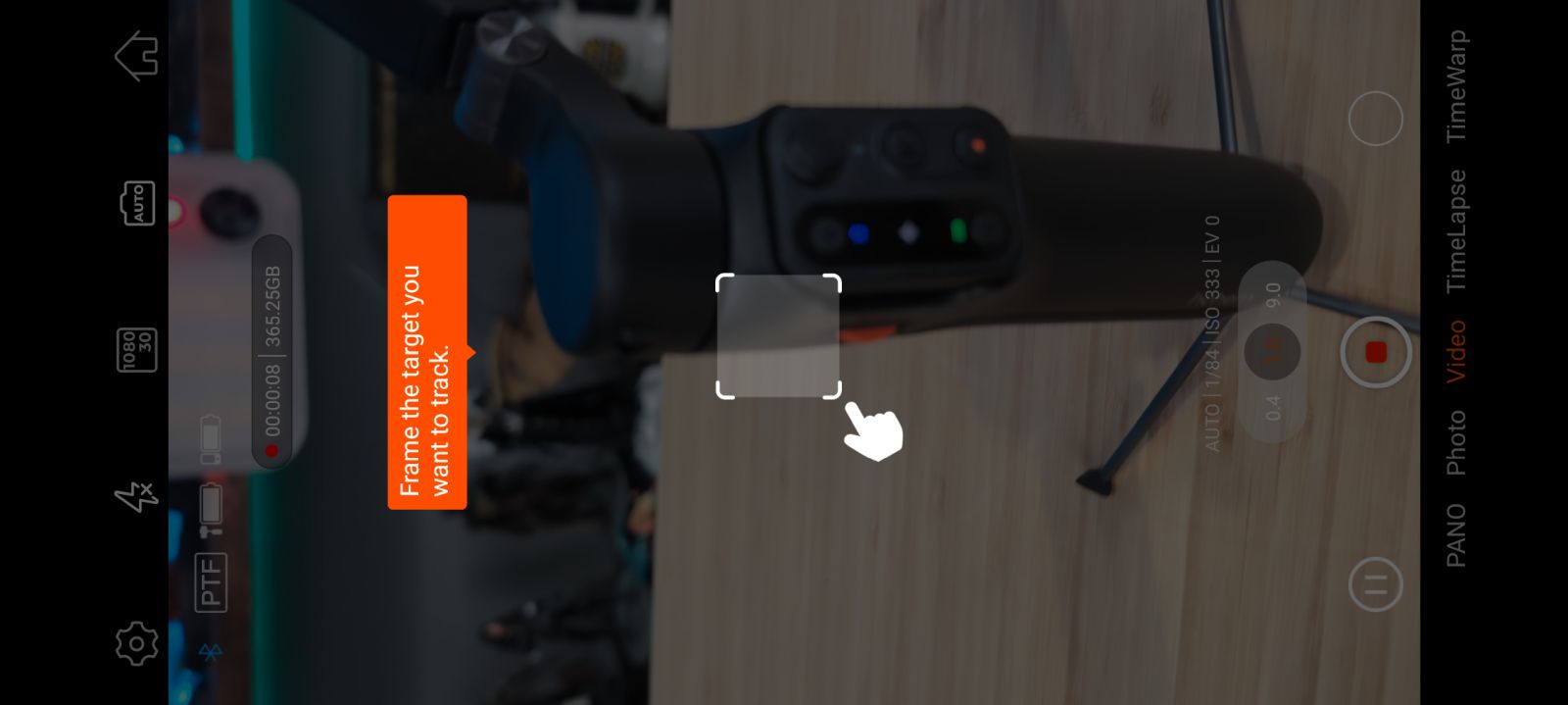
If I had a complaint, and I’m not sure if it’s a software limitation or a hardware one, it’s the speed I can move the motor with the thumbstick. It’ll sure snap into place when flipping from vertical to horizontal, so I know it’s capable of rapid movements, but turning, panning, and tilting with the remote control stick is quite slow. Sure, that means the footage will be smooth, but sometimes you need to pan quickly to catch something.
The last stop on any hardware review is a look at price and warranty. The warranty on the Hohem iSteady V3 is a full year from purchase, which is about what I’ve seen among other devices in this class and price range. Paired with the IMPOSSIBLY low price of just $129, the value proposition on this device is frankly astounding. There are a number of gimbals in and around this price point, but none of them have the ease of use, stabilization, detachable remote, and AI integration that this one contains. Being able to grab my phone and make use of its incredible camera in a matter of seconds means I can get shots I’d otherwise have to prepare for long in advance, potentially missing them entirely.
Hohem iSteady V3 Gimbal Stabilizer
Excellent
I’m still wowed by the compact size of the iSteady V3. The included bag means I can toss it in my backpack and have it at the ready for any outing. The price means I can happily recommend it. While I wish the motor would zip into place a little faster, the tracking and feature set more than make up for it. This is a must-have for the shooter on the go.
Pros
- Stabilization delivers on its promise
- Aggressively priced
- AI tracking is actually useful
- Impossibly small when folded
- Packed to bursting with features
Cons
- Manual turn, pan, tilt with the remote is painfully slow – use AI instead
